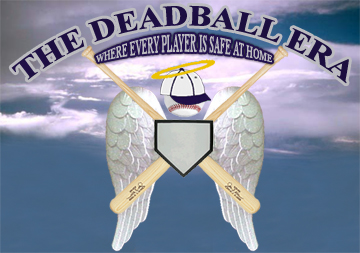





|
Karl Ehrhardt,
83, Published: February 9, 2008 Skip to next
paragraph Known as the Sign Man of Shea, Mr. Ehrhardt brought his big bag of 20-by-26-inch placards to dozens of games each year, from 1964 through 1981. Like Hilda Chester, the cowbell clanger who roamed the aisles of Ebbets Field in the heyday of the Brooklyn Dodgers in the 1950s, Mr. Ehrhardt became a stadium fixture. Cameras zeroed in and fans hooted when he unfolded his signs. On a summer day in 1979, when a slow grounder defied the grip of shortstop Frank Taveras, Mr. Ehrhardt quickly checked the color-coded tabs in his portfolio and unfurled, “Look Ma, No Hands.” Whenever outfielder José Cardenal struck out, the sign said, “Jose, Can You See?” Finer moments were greeted with “Just Great!” or “Can You Believe It?” On Oct. 16, 1969, when left fielder Cleon Jones caught the final out of the World Series, a choked-up Sign Man held up, “There Are No Words.” Bob Mandt, the former Mets ticket manager and vice president for stadium operations, said Thursday that Mr. Ehrhardt “was able to reach into his bag and pull out something appropriate without missing a beat.” “He was part of the happening that Shea became,” Mr. Mandt said. In an interview with The New York Times in 2006, Mr. Ehrhardt said, “I just called them the way I saw them.” In fact, he was well prepared to call them when he saw them. Choosing from the approximately 1,200 signs he had at home, Mr. Ehrhardt would, he said, “crystal ball what might happen that day,” by reading newspapers to learn who was hot and who was not. Karl Kurt Ehrhardt was born in Unterweissbach, Germany, on Nov. 26, 1924, the son of Willie and Elsie Voigt Ehrhardt. When he was 6, the family left for the United States and his parents opened a beauty parlor in Queens. Mr. Ehrhardt served in the Army during World War II, as a translator in a prisoner-of-war camp holding German soldiers. After the war, he graduated from Pratt Institute with a degree in design art. He later designed advertisements for American Home Foods. In 1949, Mr. Ehrhardt married the former Lucille Schneyer; she died in 1997. He is survived by a daughter, Bonnie Troester of Old Orchard Beach, Me.; a son, Richard, of Queens; and two grandchildren. In 2002, the Mets invited Mr. Ehrhardt to help celebrate the franchise’s 40th anniversary. At a game against the Los Angeles Dodgers — he had once loved the Brooklyn Bums — he held high, “The Sign Man Lives.” |